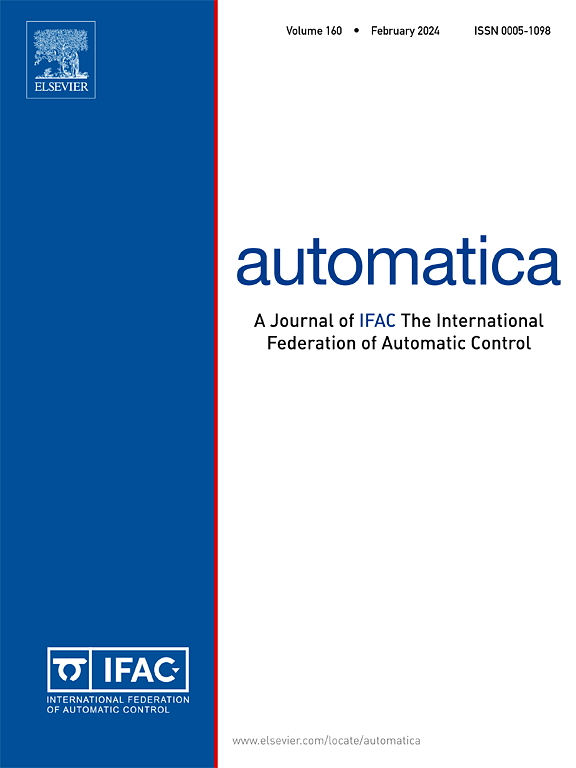Boundary control and observer design via backstepping for a coupled parabolic–elliptic system
IF 4.8
2区 计算机科学
Q1 AUTOMATION & CONTROL SYSTEMS
引用次数: 0
Abstract
Stabilization of a coupled system consisting of a parabolic partial differential equation and an elliptic partial differential equation is considered. Even in a situation where the parabolic equation is exponentially stable on its own, the coupling between the two equations can cause instability in the overall system. A backstepping approach is used to derive a single boundary control input that stabilizes the coupled system. The result is an explicit expression for the stabilizing control law. The second part of the paper involves the design of exponentially convergent observers to estimate the state of the coupled system, given some partial boundary measurements. The observation error system is shown to be exponentially stable, again using a backstepping method. This leads to the design of observer gains in closed-form. Finally, the output feedback problem is addressed by combining the observers with the state feedback boundary control. The theoretical results are demonstrated with numerical simulations.
求助全文
约1分钟内获得全文
求助全文
来源期刊

Automatica
工程技术-工程:电子与电气
CiteScore
10.70
自引率
7.80%
发文量
617
审稿时长
5 months
期刊介绍:
Automatica is a leading archival publication in the field of systems and control. The field encompasses today a broad set of areas and topics, and is thriving not only within itself but also in terms of its impact on other fields, such as communications, computers, biology, energy and economics. Since its inception in 1963, Automatica has kept abreast with the evolution of the field over the years, and has emerged as a leading publication driving the trends in the field.
After being founded in 1963, Automatica became a journal of the International Federation of Automatic Control (IFAC) in 1969. It features a characteristic blend of theoretical and applied papers of archival, lasting value, reporting cutting edge research results by authors across the globe. It features articles in distinct categories, including regular, brief and survey papers, technical communiqués, correspondence items, as well as reviews on published books of interest to the readership. It occasionally publishes special issues on emerging new topics or established mature topics of interest to a broad audience.
Automatica solicits original high-quality contributions in all the categories listed above, and in all areas of systems and control interpreted in a broad sense and evolving constantly. They may be submitted directly to a subject editor or to the Editor-in-Chief if not sure about the subject area. Editorial procedures in place assure careful, fair, and prompt handling of all submitted articles. Accepted papers appear in the journal in the shortest time feasible given production time constraints.
 求助内容:
求助内容: 应助结果提醒方式:
应助结果提醒方式:


